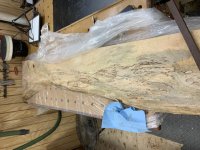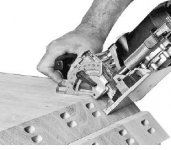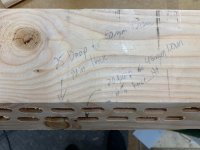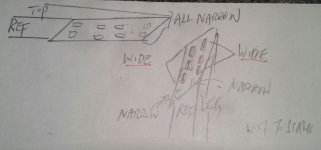Christophl
Member
- Joined
- Mar 6, 2021
- Messages
- 65
Hi, I' building a 6' long sofa table from Mango and Wenge. The mango was badly warped and after planing, it's only now 1 1/2" thick. I plan on using the Dominoe for a continuous grain Mango on the left leg, and Wenge on the right leg. Not sure what size Dominoe to use (the thickest and longest I can fit in the corner?), and I want to make sure this will be a strong enough joint for this long table.
Thanks guys!
Chris
Thanks guys!
Chris









